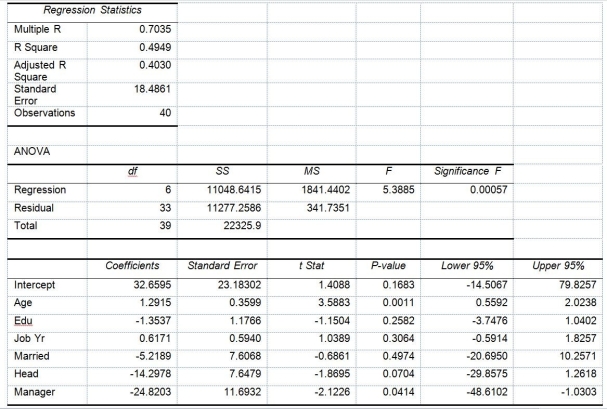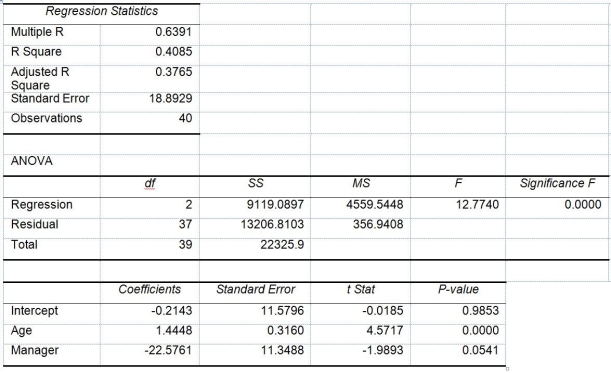TABLE 14-17


Model 2 is the regression analysis where the dependent variable is Unemploy and the independent variables are
Age and Manager. The results of the regression analysis are given below:

-Referring to Table 14-17 Model 1, what is the p-value of the test statistic to determine whether there is a significant relationship between the number of weeks a worker is unemployed due to a layoff and the entire set of explanatory variables?
Definitions:
Spot Rates
The current market price of a financial instrument, commodity, or currency for immediate delivery and payment.
Absolute Purchasing Power Parity
A theory that states that exchange rates between currencies are in equilibrium when their purchasing power is the same in each of the two countries.
Trading Barriers
Restrictions or laws that limit the ability to trade goods, services, or financial instruments across borders or within markets.
Absolute Purchasing Power Parity
A theory that asserts that in the absence of market frictions, identical goods in different countries should have identical prices when expressed in a common currency.
Q19: Referring to Table 14-3, to test whether
Q24: The following is the list of
Q52: Referring to Table 15-4, the null hypothesis
Q98: Referring to Table 14-19, there is not
Q108: Referring to Table 13-13, the p-value of
Q140: Referring to Table 16-13, you can reject
Q141: Referring to Table 13-5, the prediction for
Q184: Referring to Table 14-7, the department head
Q221: Referring to Table 14-13, the fitted model
Q316: Referring to Table 14-17 Model 1, predict